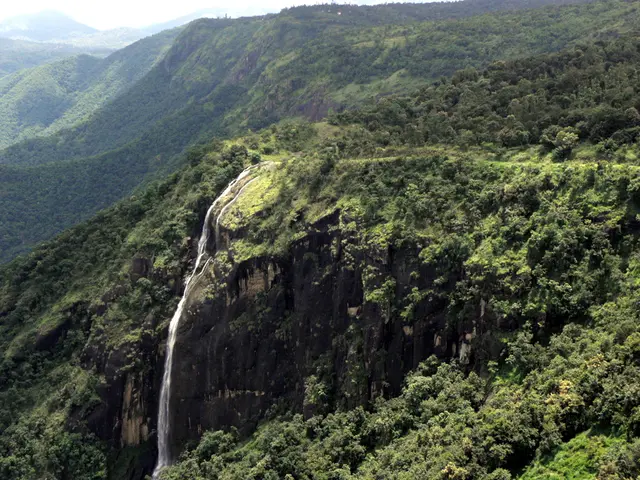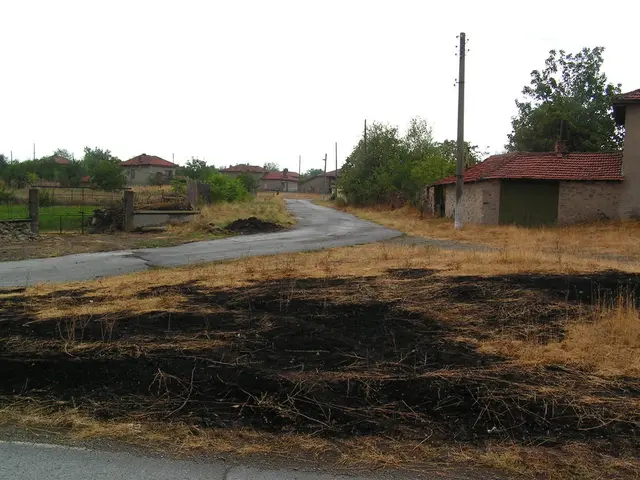Explosive growth anticipated for boat tourism in the South over the next five years, expected to reach an increase of 25%
**Boosting Nautical Tourism in Southern Italy: A Sustainable Approach**
In an effort to increase the value of nautical tourism in Southern Italy by 25% over the next five years, a plan is being developed by Confindustria Nautica, the organisation overseeing the Italian nautical industry. The plan focuses on creating infrastructure that is equipped and suitable for nautical tourism, prioritizing the South region due to its fewer moorings compared to the Centre-North.
Marco Monsurro, the newly elected vice-president of Confindustria Nautica, is responsible for the Mezzogiorno and internationalization delegations within the organisation. He is leading the charge to address the issue of insufficient destination places (coves) in areas with high mooring density.
One key strategy is the development of climate-resilient infrastructure. Southern regions like Puglia face significant climate challenges such as coastal erosion, water scarcity, and extreme weather events that threaten tourism infrastructure and ecosystems. Investing in flexible, forward-looking climate adaptation measures—such as reinforcing coastal defenses, using sustainable water management systems, and protecting cultural heritage sites—will safeguard and sustain nautical tourism assets.
Addressing water scarcity, a critical issue in southern Italy, is another focus. Technologies like desalination plants and efficient water use will ensure adequate supply for tourists and local communities, preventing disruption to tourism services and creating a more resilient infrastructure system supporting nautical and coastal tourism.
Upgrading marinas and nautical ports with modern amenities is also a priority. This includes fuel stations, maintenance services, waste disposal facilities, and secure mooring. Facilities should also integrate eco-friendly technologies and services to reduce the environmental footprint.
The plan also seeks to promote lesser-known destinations with quality infrastructure. Regions such as Calabria (e.g., Capo Vaticano) offer pristine and quiet coastal areas with natural beauty but limited tourism infrastructure. Developing thoughtful, high-quality accommodations, wellness centers, and waterfront dining without compromising local charm can attract discerning travelers seeking nautical experiences.
Regional collaboration and integrated marketing are also key components of the plan. Drawing from the success of Venice, Sorrento, and Sicily as coastal tourism hubs, southern regions could collaborate for integrated marketing campaigns targeting nautical tourism. Joint efforts can enhance the overall destination appeal and create synergies in infrastructure investment and visitor services.
Lastly, sustainable and smart tourism policies are being considered. Implementing policies that balance growth with sustainability—such as visitor entry fees during peak seasons, zoning to prevent overtourism, and encouraging use of quieter locations—can maintain the quality of life and tourism appeal.
It's important to note that the plan does not suggest investments in areas where the mooring density is already high. Instead, it aims to identify new mooring spaces and their types. The industrial sector associated with nautical tourism has an annual turnover of approximately 8.3 billion Euros, with the potential to grow significantly with the right infrastructure.
Piero Formenti, the president of Confindustria Nautica, emphasises the importance of this plan, stating, "By combining these infrastructure and policy improvements focused on sustainability, climate resilience, and quality visitor experience, Southern Italy can enhance its nautical tourism sector’s capacity and attractiveness, aiming for a 25% value increase within five years." Significant investments in climate adaptation and water resource management will especially be crucial given the region’s environmental vulnerabilities.
[1] European Commission. (2020). Adaptation to climate change: Fostering climate resilience in coastal areas. Retrieved from https://ec.europa.eu/environment/climate/adaptation/index_en.htm [2] World Tourism Organization. (2020). Sustainable tourism destinations: Definition, criteria, and guidelines. Retrieved from https://www.unwto.org/sustainable-tourism-destinations-definition-criteria-and-guidelines [3] European Union. (2020). Interreg Italy-Greece 2014-2020. Retrieved from https://www.interreg-italy-greece.eu/ [4] World Wildlife Fund. (2020). Mediterranean: The future of coastal tourism. Retrieved from https://www.wwf.org.uk/updates/mediterranean-future-coastal-tourism
- To attract adventure-travel enthusiasts seeking outdoor-living experiences, the plan aims to develop lesser-known destinations in Southern Italy, such as Capo Vaticano in Calabria, offering pristine coastal areas with natural beauty but limited tourism infrastructure.
- The plan also integrates home-and-garden strategies, focusing on upgrading marinas and nautical ports with modern amenities that include eco-friendly technologies and services, promoting a sustainable and high-quality lifestyle for local communities and tourists alike.
- In line with the focus on sustainable tourism, the strategy prioritizes the development of climate-resilient infrastructure in Southern regions like Puglia, addressing challenges such as coastal erosion, water scarcity, and extreme weather events, ensuring the longevity and growth of the nautical tourism sector through travel and adventure.




